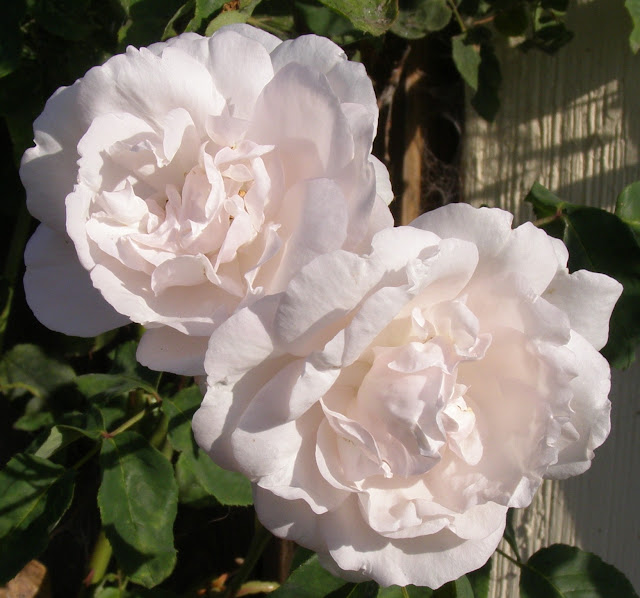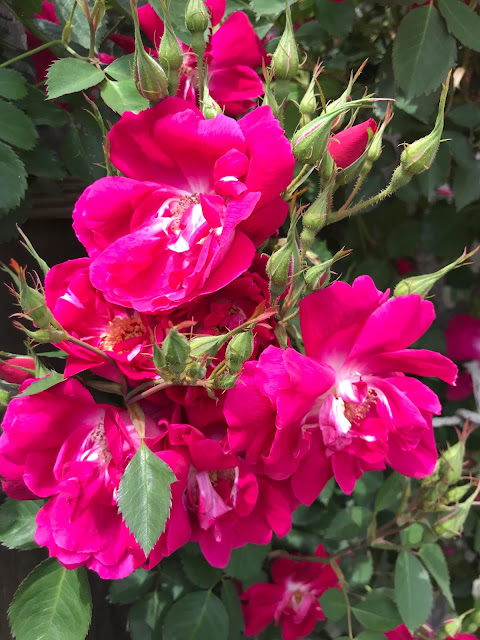Repot plants now to make use of spring vigor
 |
| A pot-bound windmill palm |
The days are now longer than the nights and the low temperatures continue to climb. Those factors combined with the wet March weather and everyone should see a real boost in plant growth.
I tackled two very large patio plants. They had been growing in their pots for more than a dozen years. This was slow going as they were both extremely pot bound and way past ready for new containers.
One, the windmill palm (Trachycarpus fortunei), I bought for a few dollars from the TLC section at Sierra Azul Nursery in Watsonville, certainly 15 years ago. During its first two years on my patio, it brought back its true form and vigor. It's a very clean, container-loving palm and its foliage offers a great contrast to most other plants. It's also one of the hardiest palms and I never have to worry about Salinas' mild freezes.
It was, however, constantly drying out and needing water. That's a sure-fire sign its time for a larger container. As the photo demonstrates, it had actually consumed most of the original soil and had little else to sustain it.
Extracting it wasn't easy. It had been growing in that large terracotta pot so I couldn't just cut it out and I wanted to reuse the pot. So with some rolling, tugging, and shaking - it finally released itself. It was a solid mass of roots.
The new container was a half wine barrel purchased from The Home Depot which also sported a nice bit of dark wood stain. The barrel was considerably wider but not significantly taller.
What to do?
Bonsai gardeners have always had to trim roots as well as branches. I got my pruning saw out and simply cut off the bottom 7 inches of the root mass. It was now a perfect fit.
All of this took some doing as I estimate the windmill palm weighed about 60 pounds.
I made up my own soil to save some money. I combined cheap topsoil with cow manure and mixed in lots of Perlite to provide good drainage. The topsoil had a significant amount of humus in it which will provide microbes and retain some moisture.
My second wine barrel was to be the home of my ponytail palm (Beaucarnea recurvata) which had been in its 15 gallon plastic pot for more than 10 years. I hadn't realized that the plant's roots had split the hidden side of the pot from top to bottom!
 |
| Ponytail Palm in its new wine barrel home. |
I bought it from the little nursery that used to be on Blanco Road, Salinas right at the Salinas River Bridge. It was only in a 4-inch pot when I got it. I had grown it as a houseplant in Arlington, Virginia and remembered it as being attractive and needing little attention.
Its roots are much more flexible than the true palm so I was able to fit it into its new home without much effort.
In both cases, I held off watering for a few days. Newly repotted succulents need a chance to seal off any broken or cracked roots. This will prevent rot.
 |
| Agave victoriae-reginae in its new pot. |
The freeing up of one large terracotta pot meant a shuffling up of several other plants into larger containers. The Agave attenuata went into the windmill's pot. The Agave victoriae-reginae went into the attenuata's pot. The golden barrel cactus (Echinocactus grusonii) got the victoriae-reginae's house.
Healthy plants need healthy soil. When they grown in containers, it's a good idea to replace the soil and trim the roots as well as the branches.
 |
| Golden barrel cactus in its new home. |






















